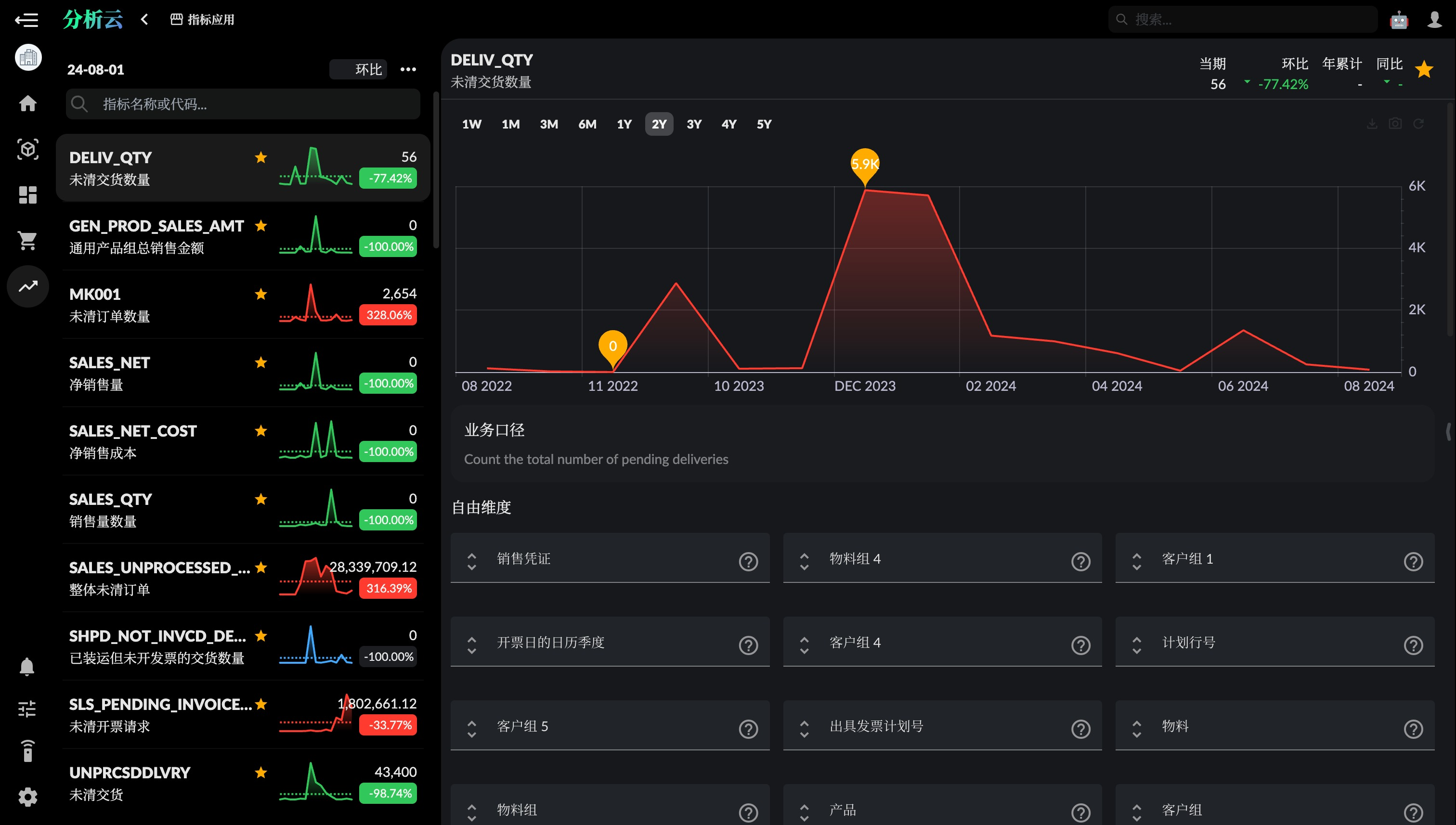In our previous two articles, we introduced:
- SAP S4HANA Embedded Real-Time Analytics - 1/4 Semantic Model Enhancing and creating calculated measures based on CDS Views in the S4 system.
- SAP S4HANA Embedded Real-Time Analytics - 2/4 Story Dashboard Creating story dashboards for real-time analysis of S4 system data based on CDS semantic models.
This article will explore how to manage indicators in the S4 system using CDS View and other models to build a comprehensive business indicator system.
Xpert Analytics Cloud, leveraging semantic models, offers powerful indicator management functions, designed to help users efficiently manage and monitor indicators within data models. By establishing a unified semantic modeling of enterprise data based on a core OLAP engine, Xpert Analytics Cloud eliminates the need for cumbersome data conversion and ETL. Through unified indicator definition functions, it enables unified management and certification of enterprise operational data. Ultimately, indicators are used for analyzing and evaluating company business and financial data through the indicator applications and story dashboards provided by Xpert Analytics Cloud.

Key Performance Indicator System (Indicator System) is a set of indicators used to measure and monitor business performance. These indicators help enterprises evaluate the achievement of their strategic goals and the efficiency of their business processes, thereby guiding management decisions.
Background Review
CDS Views in the SAP S/4HANA system development package VDM_SD_ANALYTICS are standard sales analysis views provided by SAP. We selected the Sales Volume and Outstanding Sales query view for analysis, related CDS views include:
- Analytics Catalog:
2CISDSLSANACUBE1Analytics - Sales Volume and Outstanding Sales - Query
2CISDSLSANACUBE1/2CCSDSLSANALYTICQ1Analytics - Sales Volume and Outstanding Sales
@Analytics.query: true
@AbapCatalog.sqlViewName: 'CSDSLSANALYTICQ1'
define view C_SalesAnalyticsQry_1
@Analytics.dataCategory: #CUBE
@AbapCatalog.sqlViewName: 'ISDSLSANACUBE1'
define view I_SalesAnalyticsCube_1
We created the corresponding semantic model and enhancements for this. Next, we will use the Sales Volume and Outstanding Sales semantic model to create a complete set of indicators.
Indicator Design
There are the following methods for designing indicators for SAP S4 CDS models:
- Define basic Measures in CDS, which are metric data directly extracted from the data source, such as sales amount, inventory quantity, etc.
- Design calculated measures, which are indicators derived from calculations based on basic measures, such as year-over-year growth rate, average inventory turnover rate, etc.
- Use Restricted Measures to constrain metric data based on specific conditions or dimensions, such as sales during a specific period, inventory in a particular region, etc.
Dimension Members Retrieval
Dimension Members Retriever is a key feature of Copilot Command Agents, providing more precise and efficient support for data analysis by dynamically synchronizing and quantifying dimension member information. Retrieve and vectorize the dimension members of the CDS View in the semantic model to ensure subsequent AI command agents accurately index key information of dimension members.
Indicator Registration
Register the corresponding indicators for the CDS View in the project interface.
/indicator-architect Indicator Architect
The Indicator System Architect command, based on user prompts and model information, can construct an analysis indicator system by referring to business role examples, creating indicators one by one. Use the following command to create a complete set of indicators:
/indicator-architect @2CISDSLSANACUBE1/2CCSDSLSANALYTICQ1 Create a complete set of data analysis indicators for this model
The command will suggest which indicators to construct, and after confirmation, they will be created one by one.
/indicator Single Indicator
In addition to using the Indicator Architect command to create a complete set of indicators, you can also directly create a single indicator for the CDS View in the project interface.
Use the quick AI generation button in the interface, or use the /indicator command in the copilot dialog box to create a single indicator.
/indicator @2CISDSLSANACUBE1/2CCSDSLSANALYTICQ1 Create a sales volume indicator for product group "XXX"
Indicator Application
Once the indicators are created, you can view the corresponding indicator list in the indicator application and use these indicators in the story dashboard creation.
Summary
SAP S4HANA Embedded Real-Time Analytics provides powerful data analysis and indicator management functions for enterprises. Based on CDS Views semantic models, flexible analysis models and business indicator systems can be constructed. With the indicator management functions of Xpert Analytics Cloud, enterprises can efficiently manage and monitor indicators within data models and apply them to actual business analysis and decision-making.